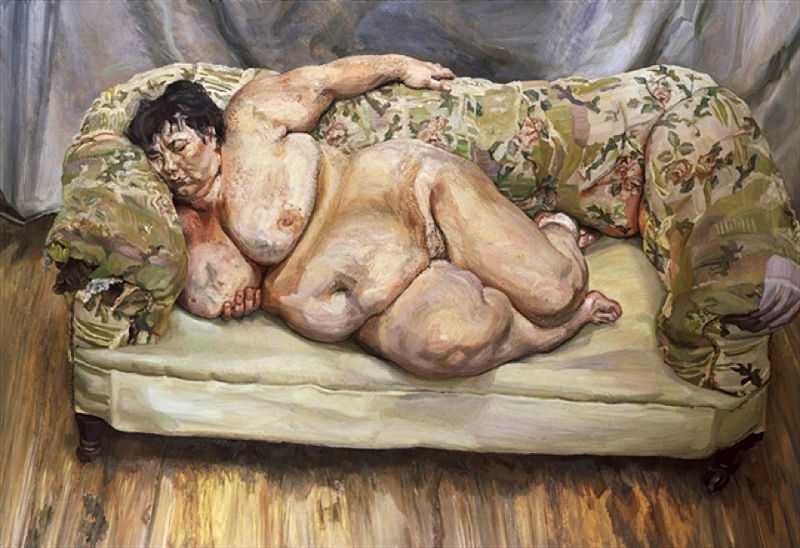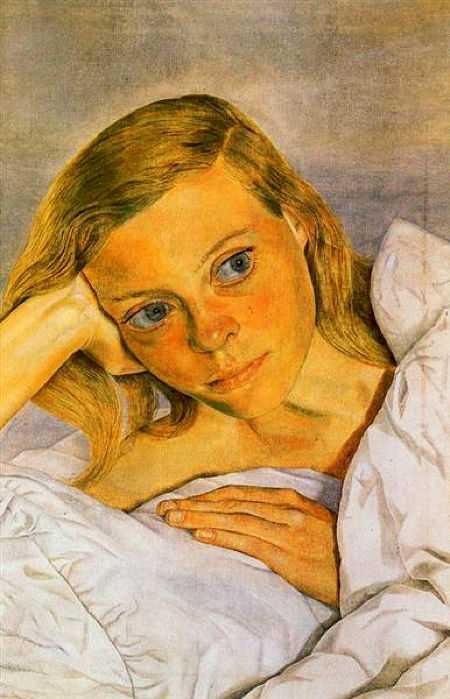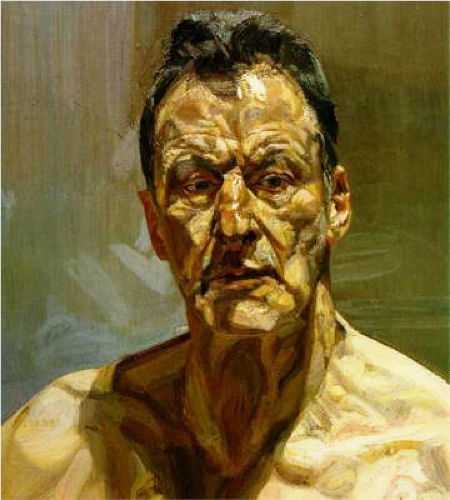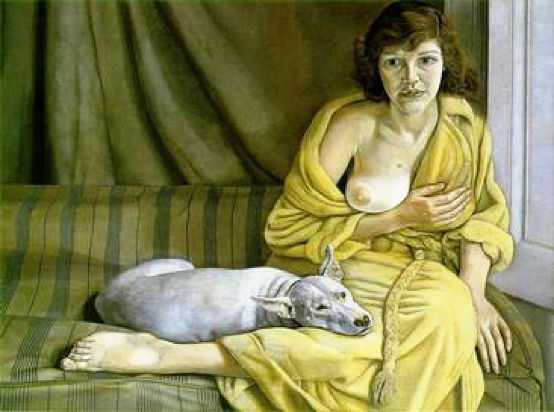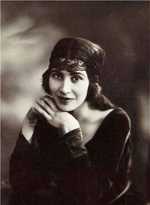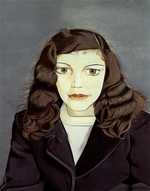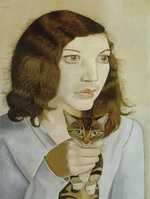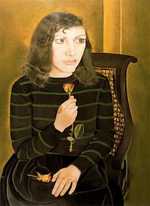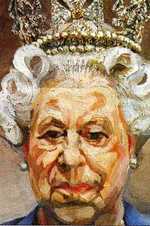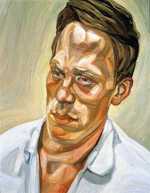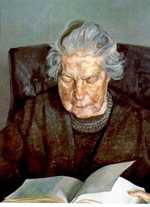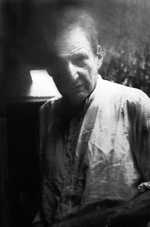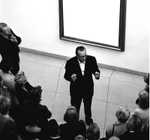1. Freud's early life
Lucian Michael Freud was born on December 8, 1922 in the upscale Tiergarten district of Berlin, Germany.
He was the second son of three boys of Austrian Jewish architect, Ernst L. Freud and German Jewish art historian, Lucie Brasch.
In 1933, to escape the rise of Nazism, Freud and his family emigrated to St. John’s Woods, London. He enrolled in Dartington Hall School near Totnes in Devon. Dartington was a co-educational school to which modern authors and intellectuals sent their sons.
As the grandson of Sigmund Freud, noted neurologist and founder of psychoanalysis, his name looked good on the school roll.
Dartington’s prospectus stressed self-regulation. During Freud’s three years there, his most memorable moments were taking care of the animals on a nearby farm and as a performer with the Dartington Eurythmic Players. He performed as the young mariner in the Rime of the Ancient Mariner.
At the age of fourteen he enrolled at Bryanston, a progressive boarding school. The curriculum was organized according to the Dalton Plan, a system focusing on individual learning. The boys were expected to complete the work largely on their own initiative. Freud’s study habits and behavior at Bryanston were less than satisfactory and shortly before his sixteenth birthday, he was asked to leave.
Freud’s father enrolled him at the Central School of Arts and Crafts. Freud found the school boring and focused on his social life. He made a lot of friends who recommended the East Anglian School of Painting and Drawing at Dedham in Essex. Founded in 1937 by Cedric Morris and Arthur Lett-Haines, it had few restraints. In 1939, Freud enrolled. During that same year he and his family became British subjects.
Shortly after Freud got settled at East Anglian, the school caught fire and was completely gutted. Freud and his Bryanston friend, David Kentish, decided to go off on a painting trip. They rented rooms in an isolated cottage called Haulfryn outside Capel Curig where the Kentish family had connections.
2. Early career
In February 1939, Freud returned to London with several paintings.
He completed a self-portrait drawing which was published in Horizon, a literary review.
To have one’s work placed in Horizon was extremely flattering, given, at the time, it was one of few literary magazines still publishing.
The East Anglian School reopened at Benton End, a sixteenth-century farmhouse. Lucian observed Cedric Morris’s work habits closely and was inspired to create a portrait of him in 1940.
In 1941, as World War II raged, Freud made an abrupt decision to join the British Merchant Navy. A friend had told him that he could cross the Atlantic regardless of the war. As a young child, he recalled American movies that played in Germany, featuring Mae West. He envisioned a Wizard of Oz odyssey and wanted to meet Judy Garland. The naval experience proved disastrous. He became ill and was discharged after three months.
Freud returned to Benton End in 1941. His relationship with Morris took a turn for the worse, but he credits Morris with teaching him how to paint and to keep at it. Later, in 1942, he renewed his friendship with John Craxton. They moved into a house, set up their studios, and perfected their craft. Later, he and Craxton entered Goldsmith College, sponsored by Peter Watson, a patron of the arts.
In 1943, Freud received his first serious assignment. He was commissioned by poet and editor Meary James Thurairajah Tambimutta to do some illustrations for a book of poems, The Glass Tower, by Nicholas Moore. They were published in 1944 by Editions Poetry London. In that same year Freud had his first solo exhibition, The Painter’s Room, sponsored by Alex Reid and Lefevre Gallery.
After returning from Greece in 1947, he met Kitty Garman and did a series of large eyed portraits of her: Girl in a Dark Jacket and Girl with a Kitten. He married her in 1948 and together they had two daughters, Annie and Annabel.
3. His finest works
In the 1950s while working as a visiting tutor at the Slade School of Fine Art of University College London, Freud began to focus on portraiture.
He set certain standards for himself and his models.
He limited himself to family, fellow artists, friends, lovers, and children. They had to agree to a large and uncertain commitment of their time. Freud studied his models carefully and was known to spend as many as 2400 hours on one painting.
Freud’s wife, Kitty, was a captive sitter and he added two more large eyed portraits to what appeared to be a theme: Girl with Roses and Girl with White Dog.
In the late sixties, Freud began to focus on full length nudes. He changed his style of painting. From a thinly painted linear style, he shifted to a much freer one. He changed to large hog-hair brushes, focusing on the texture and color of flesh, and applied much thicker paint. He also began to paint standing up.
Although he received accolades for his work, his personal life was bittersweet. He and Kitty divorced in 1952 and he married Lady Caroline Blackwood, a rich heiress, in the same year. That marriage ended in divorce in 1959.
Later, in 1970, his father, Ernst, died. The death caused his mother, Lucie, so much grief that she became severely depressed and attempted suicide. Perhaps, to assuage her depression, he began painting portraits of his mother. From the early seventies to the mid-eighties, he completed eighteen portraits.
Freud became increasingly viewed by critics as an artist who celebrated the human body, painting with a focus on physicality that had rarely been seen before in the genre of nude painting. His portraits of Australian performer, Leigh Bowery, was groundbreaking in that it challenged conventions for male representation.
Also, he took his portraits of buxom women much higher than Reubens when, in the nineties, he painted Benefits Supervisor Sleeping, featuring Sue Tilley. This painting was auctioned at Christies in New York in 2008 for $33.6 million dollars, the highest price paid for a painting by a living artist.
Over the years Freud had attained a certain celebrity status, but he had not been asked to paint Queen Elizabeth’s portrait. In 2001, he asked Queen Elizabeth II to sit for him. Since he was not commissioned, he planned to give her the painting as a gift.
She sat for Freud over a nineteen-month period. He painted a small, unflattering six by nine-inch portrait. The local newspapers erupted and shouted, “. . .a travesty.” Reportedly, the queen was not happy with the portrait, but it was placed in the Queen’s Gallery in Buckingham Palace in London.
4. Freud's legacy
Freud was a prolific painter and produced hundreds of pieces during a span of sixty years.
“It is the only point of getting up every morning: to paint, to make something good, to make something even better than before, not to give up, to compete, to be ambitious.” - Lucian Freud
He dedicated his life to his art and painted until the day he died. He “challenged conventions” of portraiture, creating bold and realistic portraits and nudes, and was an inspiration to figurative painters. Critics have described his approach to nude paintings as raw and unapologetic.
However, this approach has lived on in the works of numerous artists, important of which is Jenny Saville, an original member of the Young British Artists, whose contemporary piece, Propped (1992), was auctioned at Sothebys’ for 9.5 million pounds in 2018; the most expensive work by a living female artist sold at auction.
Freud’s early paintings redefined British art and his later works stands him in good stead with the great figurative painters of any period.
Freud died in London, July 20, 2011. He is buried in Highgate Cemetery. Archbishop Rowan Williams officiated a private funeral.
